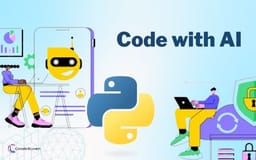What Is Python Coding For Kids?
Python coding is a type of computer programming that can be used to create all kinds of projects, using simple and easy-to-read code. There are some great benefits for kids to learn Python. It is a beginner-friendly language, which means Python is a great option for kids to develop their coding skills.
Python is used in many popular applications we interact with every day. For example, when you search for something on Google, get a video recommendation on YouTube, or buy a book from Amazon, Python is likely behind the scenes making it work. Even AI systems, like those used in robots or self-driving cars, often rely on Python. Python is also popular in fields like data science, where it helps analyze and make sense of large amounts of information.
Learning Python gives kids and teens the power to build their own programs and explore endless possibilities in technology. By learning this language you’ll open up opportunities in AI, robotics, gaming, web development, and beyond!






















